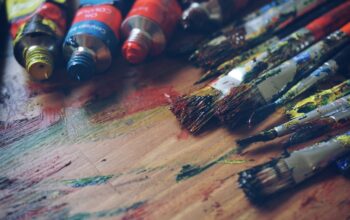In the fast-paced world of design, staying ahead of the curve can be daunting. Here are five trends that are making waves in 2025:
1. Neo-Minimalism: This design approach emphasizes simplicity and minimal colors, often used by brands that focus on quality and sophistication. Companies like Aesop adopt this style to create a clean, elegant look perfect for their skincare products. It’s all about stripping down to the essentials and letting the product speak for itself.
2. Dopamine Design: If you’re looking for a bold contrast, Dopamine Design is the way to go. It’s all about vibrant colors, playful visuals, and a tech-forward vibe that grabs attention instantly. Think of brands like Starface, which use saturated color dynamics and fun motifs to evoke joy and excitement.
3. Hyper-Real Texture Play: Imagine being able to rotate an electronic product on a webpage like it’s right in front of you. That’s what Hyper-Real Texture Play does, using ultra-detailed 3D renders to create a tactile experience even on a digital screen. This trend is changing how we interact with products online.
4. Immersive 3D Elements: With advancements in technology like WebGL and augmented reality, immersive 3D elements are redefining user experiences. They create interactive environments that feel more like real-world spaces, making digital interactions incredibly engaging.
5. AI-Generated Art: Designers now have access to AI tools that can generate complex art quickly and efficiently. This trend is opening up new possibilities for creativity, allowing brands to produce unique visuals tailored to their identity. It’s not just about automating art; it’s about exploring new ideas and improving design processes.
Key Takeaways:
- Balance of Styles: Design is about balance—sometimes less is more, and sometimes more is more. Trends like Neo-Minimalism and Dopamine Design show how contrasting styles can both be effective.
- Technology Integration: Advances in 3D and AI-generated art are revolutionizing how we experience digital content, making it more immersive and interactive.
- Efficiency and Creativity: Technology isn’t replacing human creativity but enhancing it, allowing designers to focus on strategy and big-picture thinking rather than getting bogged down in details.
Real-World Applications:
- Marketing: Using Dopamine Design or Hyper-Real Texture Play can significantly boost engagement on social media and websites.
- Product Design: AI-generated art and 3D elements can enhance product demonstrations and sales by providing a more immersive experience.
- Interior Design: Trends like biophilic design, which incorporates natural elements, are reshaping how we live and work by promoting well-being and sustainability.
Whether you’re a seasoned designer or just starting out, understanding these trends can help you create experiences that captivate and inspire. Whether it’s through minimalist elegance or immersive tech, the design world in 2025 is all about balance and innovation.
References:
- https://community.wacom.com/en-us/graphic-design-trends-2025/
- https://www.newtarget.com/web-insights-blog/marketing-trends-for-2025/
- https://www.designstudiouiux.com/blog/ui-ux-trends/
- https://sampleboard.com/biophilic-design-trend/
- https://solguruz.com/blog/ui-ux-design-trends/
- https://www.benq.com/en-us/knowledge-center/knowledge/what-is-hdr-the-best-image-close-to-reality/.html
- https://www.trendhunter.com/slideshow/april-2025-art-design
- https://www.securecodewarrior.com/blog



